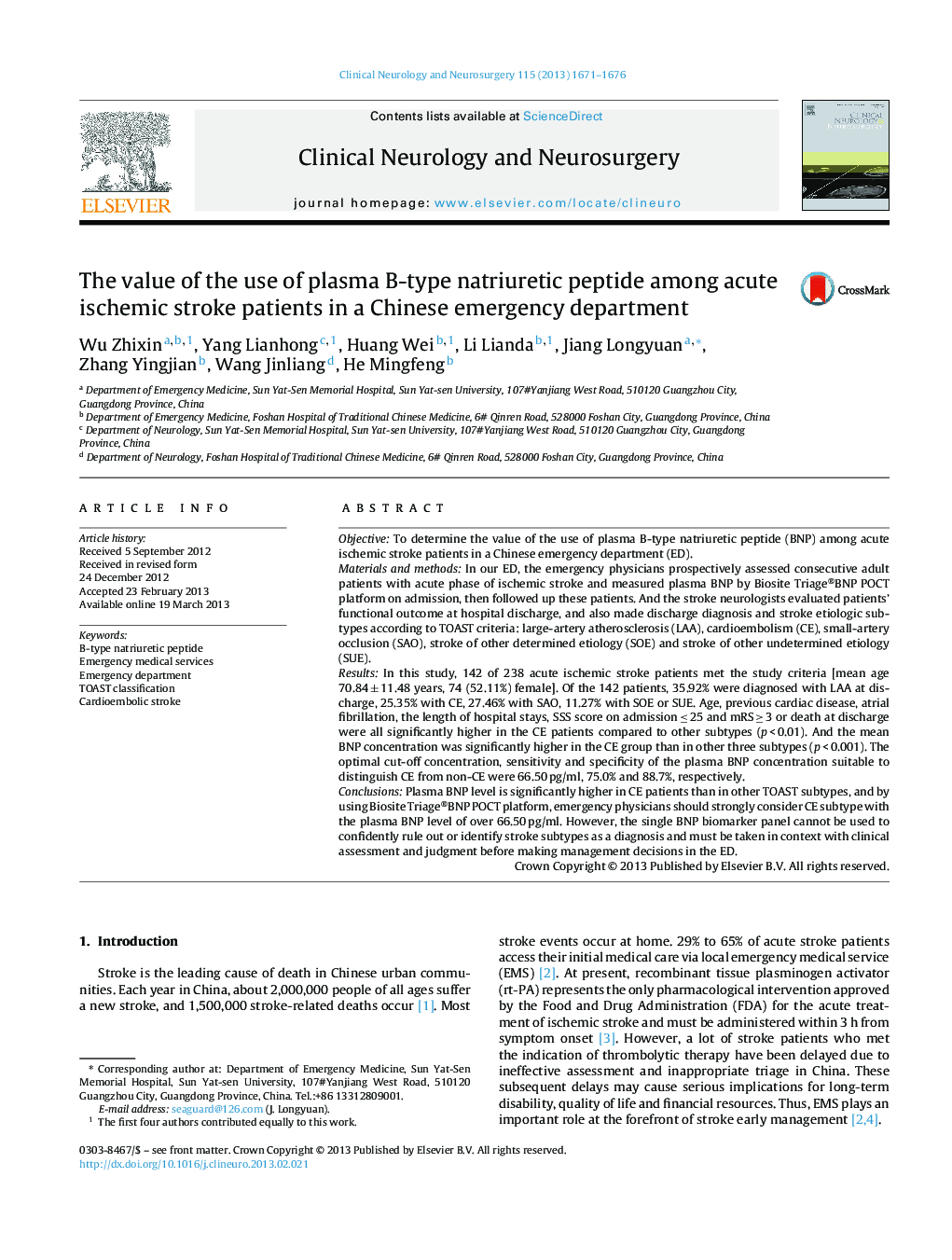| Article ID | Journal | Published Year | Pages | File Type |
|---|---|---|---|---|
| 3040480 | Clinical Neurology and Neurosurgery | 2013 | 6 Pages |
ObjectiveTo determine the value of the use of plasma B-type natriuretic peptide (BNP) among acute ischemic stroke patients in a Chinese emergency department (ED).Materials and methodsIn our ED, the emergency physicians prospectively assessed consecutive adult patients with acute phase of ischemic stroke and measured plasma BNP by Biosite Triage®BNP POCT platform on admission, then followed up these patients. And the stroke neurologists evaluated patients’ functional outcome at hospital discharge, and also made discharge diagnosis and stroke etiologic subtypes according to TOAST criteria: large-artery atherosclerosis (LAA), cardioembolism (CE), small-artery occlusion (SAO), stroke of other determined etiology (SOE) and stroke of other undetermined etiology (SUE).ResultsIn this study, 142 of 238 acute ischemic stroke patients met the study criteria [mean age 70.84 ± 11.48 years, 74 (52.11%) female]. Of the 142 patients, 35.92% were diagnosed with LAA at discharge, 25.35% with CE, 27.46% with SAO, 11.27% with SOE or SUE. Age, previous cardiac disease, atrial fibrillation, the length of hospital stays, SSS score on admission ≤ 25 and mRS ≥ 3 or death at discharge were all significantly higher in the CE patients compared to other subtypes (p < 0.01). And the mean BNP concentration was significantly higher in the CE group than in other three subtypes (p < 0.001). The optimal cut-off concentration, sensitivity and specificity of the plasma BNP concentration suitable to distinguish CE from non-CE were 66.50 pg/ml, 75.0% and 88.7%, respectively.ConclusionsPlasma BNP level is significantly higher in CE patients than in other TOAST subtypes, and by using Biosite Triage®BNP POCT platform, emergency physicians should strongly consider CE subtype with the plasma BNP level of over 66.50 pg/ml. However, the single BNP biomarker panel cannot be used to confidently rule out or identify stroke subtypes as a diagnosis and must be taken in context with clinical assessment and judgment before making management decisions in the ED.
